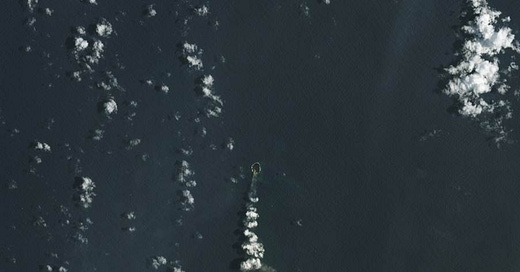[My previous post had a section on the current geopolitical issue regarding minerals in Ukraine. I am not going to get involved in the sorry events of the last few days. However, the former diplomat Arthur Snell has an interesting ‘take’ on these minerals, including the viability of their extraction. You can read it here.
This post refers to past and recent tectonic activity in the Pacific Ocean, specifically around Tonga.]
I wrote this short section in 2022 (it was part of an essay answer). Also note the Covid pandemic was still prevalent around the world at that time.
The Tonga Hunga-Tonga-Hunga-Ha’apai (Tonga) volcanic eruption began late in 2021. Here, a submarine volcano began to erupt. That volcano lies on the Tonga-Kermadec subduction zone stretching from New Zealand to Fiji. Plumes of gas and debris from the eruption reached 20km into the sky, and much ash fell on to surrounding islands, over an extensive area. A tsunami was created, spreading across the Pacific Ocean; 4 people were killed by it. In total, 85,000 people were affected, mainly on the most populated islands e.g. Tonga’tapu. The single undersea cable connecting Tonga to the outside world was severed. Phone and internet communications were extremely limited, meaning the situation in some areas remained unknown for several days.
In terms of management, factors relating to place, and governance were most significant. The main airport was largely undamaged, but the runway was covered by thick ash. Local people swept the runway as quickly as they could. Local volunteer Red Cross teams supported evacuations, providing first aid, and distributing relief supplies which were already on the islands. International help responded immediately. New Zealand sent two ships, including HMNZS Wellington, to the area with water supplies, survey teams and a helicopter. Australia flew military planes over the islands to investigate damage. However aid workers from overseas were discouraged. The islands were Covid free until the explosion and the Tonga government wanted to keep it that way.
Now fast forward to 2025
A small island at Tonga’s Home Reef has enlarged in recent weeks. The underwater volcano emerged above sea level during the 2021/22 eruption, adding new land to the nation of islands in the South Pacific Ocean. It continued to grow during eruptions in September 2023, January 2024, and June 2024, expanding to 12.2 hectares. During the most recent period of activity, from December 2024 to January 2025, the island grew another 3.7 hectares. The new land formed as lava flowed from the volcano’s vent and solidified into rock.
The impact of underwater volcanic eruptions on marine ecosystems can be mixed. Some of the substances found in underwater plumes, especially iron, can encourage the growth of phytoplankton. However, the hot, acidic plumes are also known to be harmful to many species of fish and other types of marine life. Meanwhile, the new land offers more habitat for pioneer species, such as bacteria, algae, lichens, insects, and seabirds.
Home Reef also sits within the Tonga-Kermadec subduction zone, an area where three tectonic plates are colliding at the fastest convergent boundary in the world. Here, the Pacific Plate is sinking beneath two other small plates, yielding one of Earth’s deepest trenches and most active volcanic arcs.
So far Home Reef’s eruptions have had little impact on people, unlike the neighbouring Hunga Tonga-Ha’apai volcano, which erupted in 2022, triggering a tsunami, covering nearby islands with ash, and damaging crops and fisheries.
Tonga Home Reef 2nd February 2025
Photo NASA




